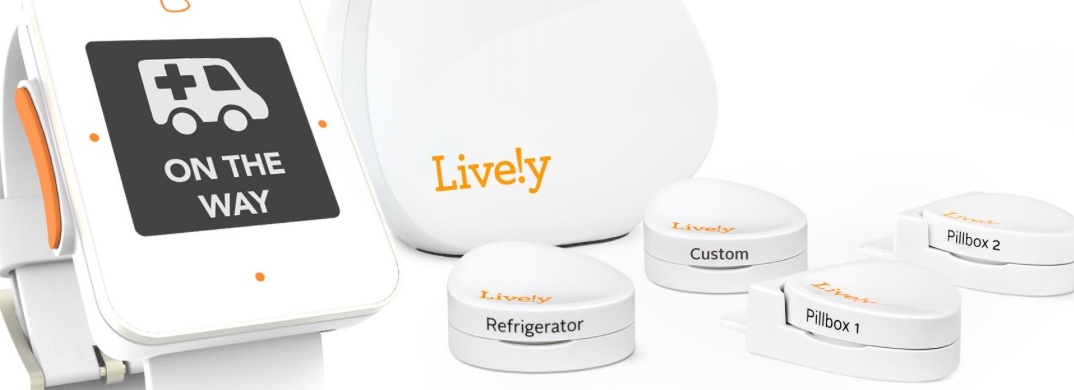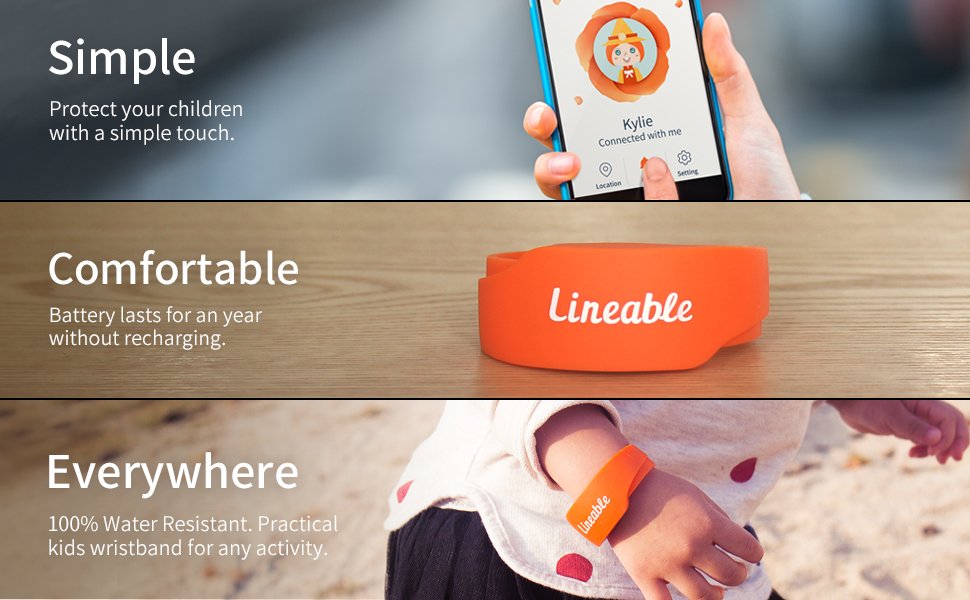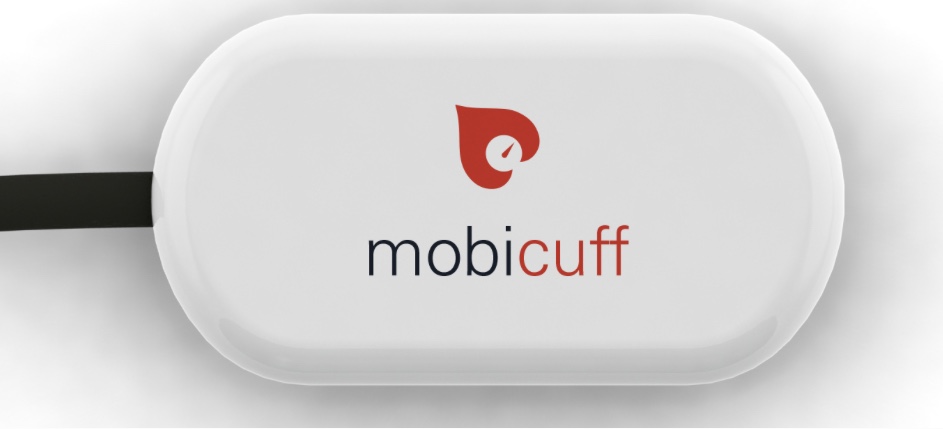Health - Wellness - Safety Device(s) & Sensor(s)
Lively
Caregiving goes digital | Personal Emergency response - Reimagined
As the global population aged 65 and over is expected to reach 715 million in 2020 and 1.5 billion in 2050, there will be an increasing demand for healthcare and caregivers to support and look after the elderly population. This demand, combined with senior adults seeking independence, security and the comfort of their own home means there will be a heavy financial cost for governments to provide healthcare.
The Lively system alleviates this pressure with its digital hub and sensors, which monitor and record the actions of older adults in their own home. Lively sensors, attached to important items such as the shower door, medicine box and the refrigerator, all send usage data to the Lively Hub.
The data produced can be securely accessed by family members and carers via the web or smartphone app to view and understand whether the senior person is taking their medicine, eating regularly and drinking properly while a key fob featuring a Bluetooth® low energy transmitter helps determine if the person being monitored has left the house. This allows the family (usually the adult child) of the older adult to have a non-invasive overview of the health and wellbeing while providing the homeowner with a healthy and independent lifestyle.
Source: ARM - Innovation Hub
The Lively system alleviates this pressure with its digital hub and sensors, which monitor and record the actions of older adults in their own home. Lively sensors, attached to important items such as the shower door, medicine box and the refrigerator, all send usage data to the Lively Hub.
The data produced can be securely accessed by family members and carers via the web or smartphone app to view and understand whether the senior person is taking their medicine, eating regularly and drinking properly while a key fob featuring a Bluetooth® low energy transmitter helps determine if the person being monitored has left the house. This allows the family (usually the adult child) of the older adult to have a non-invasive overview of the health and wellbeing while providing the homeowner with a healthy and independent lifestyle.
Source: ARM - Innovation Hub
Dot
The world’s first braille smartwatch |
Vision
Affordable and innovative E-Braille reader for the visually impaired people around the globe. With Dot, Disability is not Inability. Problems we want to end. There are 285 million visually impaired people around the globe. "We strive to reduce the invisible discrimination against people living with blindness in information accessibility" |
|
1%
of normal books translated to braille books. |
$2000↑
For the past 20 years, braille readers have cost between $2,000 and $15,000 and there have been no innovations in the industry. |
95%
of blind people give up learning Braille. Due to cost, most VIP are unable to access braille readers or braille books. |
Lineable
MobiCuffThe smarter way to measure blood pressureThe compact device can report pulse rates, systolic and diastolic blood pressures, has a test range of 30-260mmHg, and is accurate to within two per cent. As a smart device, companion smartphone apps will be made available to track your measurement history, remind you to take new readings, and most importantly, identify irregularities.
High blood pressure (hypertension) is estimated to kill nine million people a year according to the World Health Organization. It is a particular problem in developing world countries where many people are affected by associated illnesses such as heart disease, stroke and kidney failure. However, this is a problem that is extremely difficult to tackle, especially in regions where medical technology and training may be of a relatively poor standard. The main issue is the difficulty in spotting early signs of the disease as suffers show few external symptoms. For this reason, the disease is dubbed the ‘silent killer’ and this is where a new device called MobiCuff comes in. |
Developed by scientists from the Oxford Centre for Affordable Healthcare Technology, MobiCuff is a low-cost, connected device designed to accurately measure blood pressure at less than one sixth the cost of the cheapest existing devices. It utilizes a traditional cuff and air pump but the measurement process is guided by a smartphone app that interprets the data and sends to a patient’s electronically-held medical records.
Source: ARM - Innovation Hub |

The keeping of accurate medical records linked to the correct person is at the heart of providing reliable healthcare but in many developing countries this remains a challenge. A company based in Cambridge called SimPrints is set on resolving this with a biometric scanner that digitally links a person's fingerprints to their health records. The scanner offers many advantages in terms of identification confidence but it also means medical records can be kept on-line with a reliable backup that is updated electronically.
Health workers out in the field are able to quickly identify patients as the scanner syncs with their smartphone and then seamlessly obtains their records. When internet connectivity is poor, the device can be placed in an 'offline mode' where the SimPrints system accesses a previously downloaded database with newly obtained patient data uploaded when connectivity is regained.
The system also gets around the issues in many developing nations where people are only known by common community names and with unknown dates of birth. Also, any records that do exist are paper-based and therefore prone to being lost or damaged.
SimPrints is further enhancing the security of its technology by storing all patients' biometric data with time stamps and GPS coordinates to record where each patient has been assessed. Fingerprint scans are not transmitted and all records are RSA encrypted with scanners connecting wirelessly to a Bluetooth® 2.0 compatible phone.
The pocket-sized scanner has been shaped to fit in the palm of a hand and is durable enough to be carried by emergency medical teams in the toughest conditions. SimPrints is currently prototyping the device with an ARM® Cortex®-M processor due to its energy-efficiency and ease of use to enable developers to meet the needs of tomorrow’s smart and connected embedded applications.
Source: ARM - Innovation Hub
Health workers out in the field are able to quickly identify patients as the scanner syncs with their smartphone and then seamlessly obtains their records. When internet connectivity is poor, the device can be placed in an 'offline mode' where the SimPrints system accesses a previously downloaded database with newly obtained patient data uploaded when connectivity is regained.
The system also gets around the issues in many developing nations where people are only known by common community names and with unknown dates of birth. Also, any records that do exist are paper-based and therefore prone to being lost or damaged.
SimPrints is further enhancing the security of its technology by storing all patients' biometric data with time stamps and GPS coordinates to record where each patient has been assessed. Fingerprint scans are not transmitted and all records are RSA encrypted with scanners connecting wirelessly to a Bluetooth® 2.0 compatible phone.
The pocket-sized scanner has been shaped to fit in the palm of a hand and is durable enough to be carried by emergency medical teams in the toughest conditions. SimPrints is currently prototyping the device with an ARM® Cortex®-M processor due to its energy-efficiency and ease of use to enable developers to meet the needs of tomorrow’s smart and connected embedded applications.
Source: ARM - Innovation Hub
BEE | Smart Diabetes TrackerThe smart way to keep on top of your diabetes |
The Bee fits to the top of most insulin pens and automatically records injected insulin and glucose units, wirelessly transmitting data to a patient's log book which is stored inside a smartphone app. Using Bluetooth 4.0 to transmit the data, the information can also be easily shared with health care providers, friends and family.
|
|
Around one in twenty people in the World suffer from diabetes and finding better ways to monitor and treat the condition is a global challenge. To help with that, Vigilant™ has created the Bee, the World’s first Bluetooth® smart tracker for insulin injections.
Users can access their data at any time to find out when their last injection was administered and graphs illustrate trends and patterns. It makes it easy for people or medical specialists to ensure correct plans are being followed and reduces the risk of missed injections or double dosing. At the 2015 CES awards, the Bee was announced as an honoree award winner within the Innovation Biotech category. Honoree award winners reflect innovative design and engineering in some of the most cutting edge tech products and services coming to market. Source: ARM - Innovation Hub |
|
OrCam is an intuitive portable device with a built-in smart camera designed to assist the visually impaired. The visual aid recognizes text and products, and speaks to you through a bone-conduction earpiece.
|
TED@NYC Oct. 2013, Amnon Shashua presenting OrCam
|
When you have trouble seeing, routine everyday tasks become incredibly difficult and daunting. Up until now, reading aids for the visually impaired and the blind have been clunky text recognition devices or apps high on promise and low on capabilities. This is all about to change with OrCam, a wearable camera-based system that will open up a whole new world to those with sight difficulties.
The OrCam device is a discreet smart camera mounted on the frames of a user's eyeglasses which allows the visually impaired access to daily activities that the sighted take for granted, such as hopping on the right bus, shopping for food or reading the sports pages of a newspaper. The camera 'sees' text, recognizes objects, and 'whispers' the information it has identified into the wearer's ear.
OrCam quite literally understands what you want, whether it is to read a book, find the correct item on a shop shelf, or recognize bank notes. All it takes is a simple pointing gesture. The base unit is smaller than the average glasses case and slips into a pocket or clips on to a belt.
The device can read books, signs, labels and even text on a computer or phone. When you point to a sentence, OrCam will start reading. The device uses innovative bone-conduction technology, which sends sound to the ear through the bones of the skull, so you don't have to wear a cumbersome earpiece. Its powerful computer translates the printed word into audio in under two seconds!
OrCam can't give people back their vision, but it can give them back their independence.
Source: ARM - Innovation Hub
The OrCam device is a discreet smart camera mounted on the frames of a user's eyeglasses which allows the visually impaired access to daily activities that the sighted take for granted, such as hopping on the right bus, shopping for food or reading the sports pages of a newspaper. The camera 'sees' text, recognizes objects, and 'whispers' the information it has identified into the wearer's ear.
OrCam quite literally understands what you want, whether it is to read a book, find the correct item on a shop shelf, or recognize bank notes. All it takes is a simple pointing gesture. The base unit is smaller than the average glasses case and slips into a pocket or clips on to a belt.
The device can read books, signs, labels and even text on a computer or phone. When you point to a sentence, OrCam will start reading. The device uses innovative bone-conduction technology, which sends sound to the ear through the bones of the skull, so you don't have to wear a cumbersome earpiece. Its powerful computer translates the printed word into audio in under two seconds!
OrCam can't give people back their vision, but it can give them back their independence.
Source: ARM - Innovation Hub
LifeBEAM Smart Hat
Sensing the Human Race
|
The LifeBEAM smart hat brings intelligence to your training. Whether going for a run, TRX training, playing a sport, or even hiking, the LifeBEAM smart hat can send precise measurements of your heart rate, steps, and calories to your favorite smartphone app or fitness watch.
Source: LifeBEAM.com |
|














